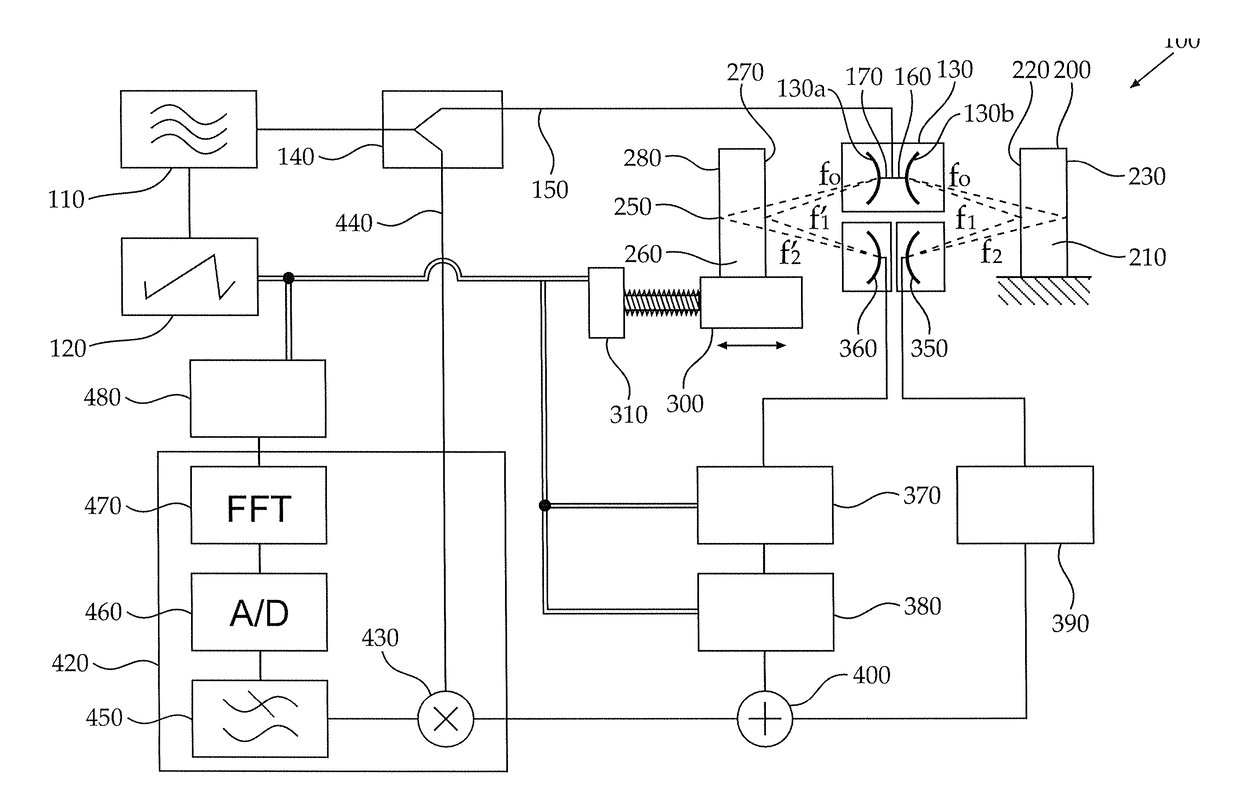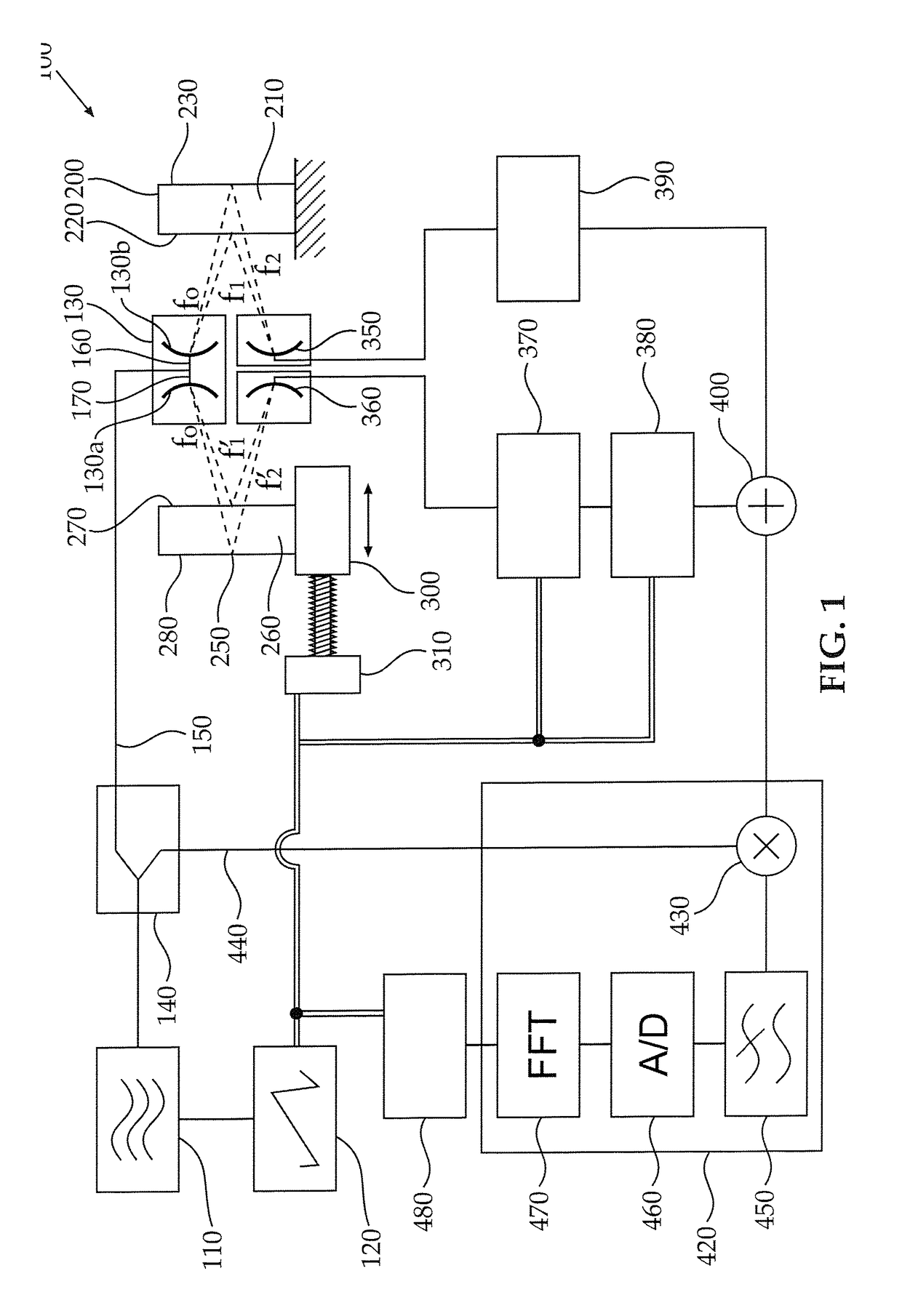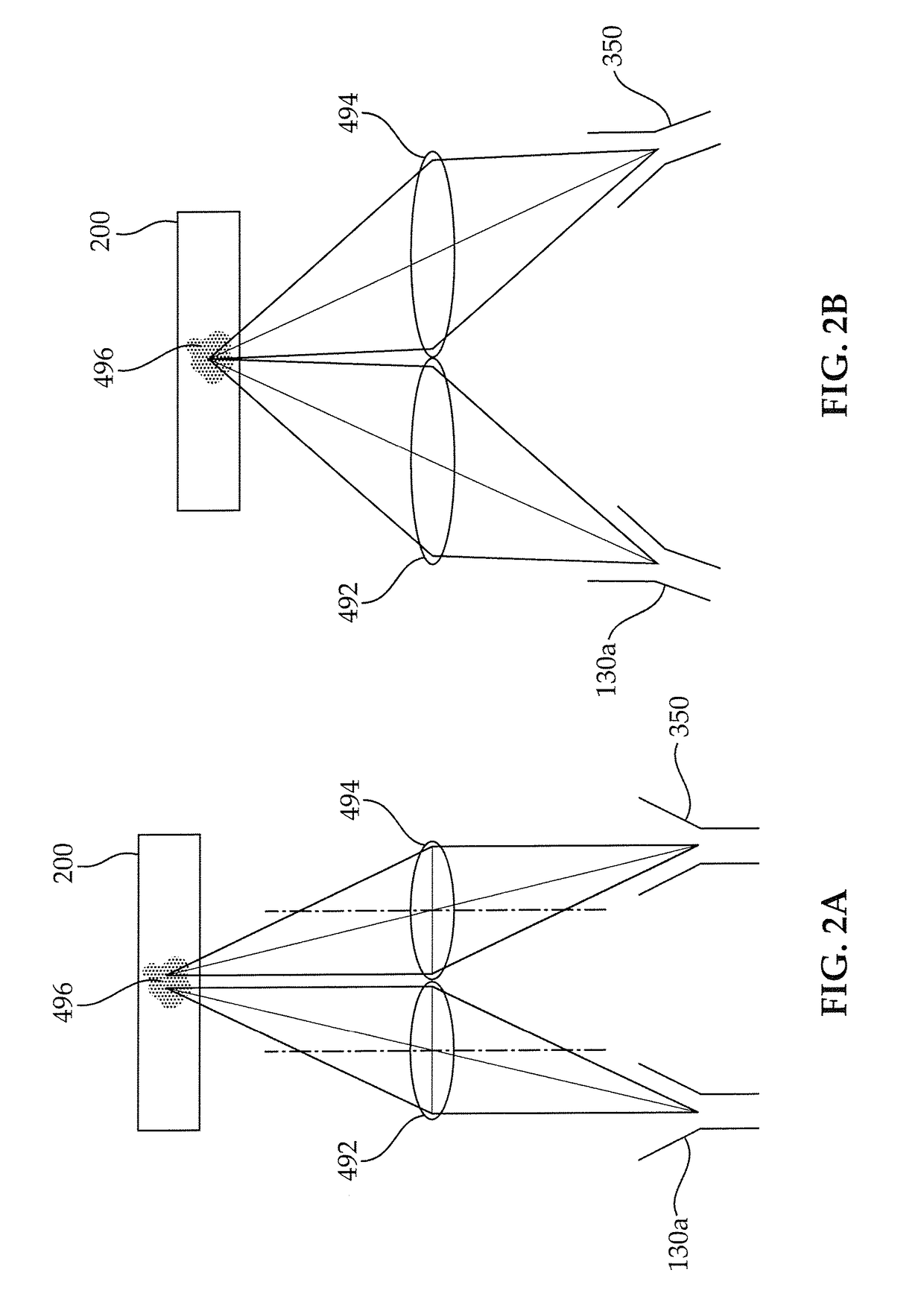Emcw layer thickness measurement apparatus and method
a technology of emcw and measurement apparatus, which is applied in the direction of measurement devices, instruments, and using reradiation, can solve the problems of inaccurateness and sometimes impaired validity of measurement, and achieve the effects of reducing the influence of imperfections such as non-linearity or temporal fluctuations of emcw frequency modulation, and simple and inexpensive circuitry
- Summary
- Abstract
- Description
- Claims
- Application Information
AI Technical Summary
Benefits of technology
Problems solved by technology
Method used
Image
Examples
Embodiment Construction
[0029]The principles, uses and implementations of the teachings herein may be better understood with reference to the accompanying description and figures. Upon perusal of the description and figures present herein, one skilled in the art is able to implement the teachings herein without undue effort or experimentation. In the figures, like reference numerals refer to like parts throughout.
[0030]FIG. 1 schematically depicts an embodiment of an apparatus 100 for thickness measurements of layers, particularly (but not necessarily) of electrically isolating materials such as polymers, glass, ceramics and the like. The description herein relates to an illustrative example of a thickness measurement of a single layer; however a person skilled in the art may readily observe that the method may qualify and may be capable of providing thickness measurement of a desired layer in a multi-layer object, as is further explained below. The measurement described herein, according to some embodimen...
PUM
 Login to View More
Login to View More Abstract
Description
Claims
Application Information
 Login to View More
Login to View More - R&D
- Intellectual Property
- Life Sciences
- Materials
- Tech Scout
- Unparalleled Data Quality
- Higher Quality Content
- 60% Fewer Hallucinations
Browse by: Latest US Patents, China's latest patents, Technical Efficacy Thesaurus, Application Domain, Technology Topic, Popular Technical Reports.
© 2025 PatSnap. All rights reserved.Legal|Privacy policy|Modern Slavery Act Transparency Statement|Sitemap|About US| Contact US: help@patsnap.com



